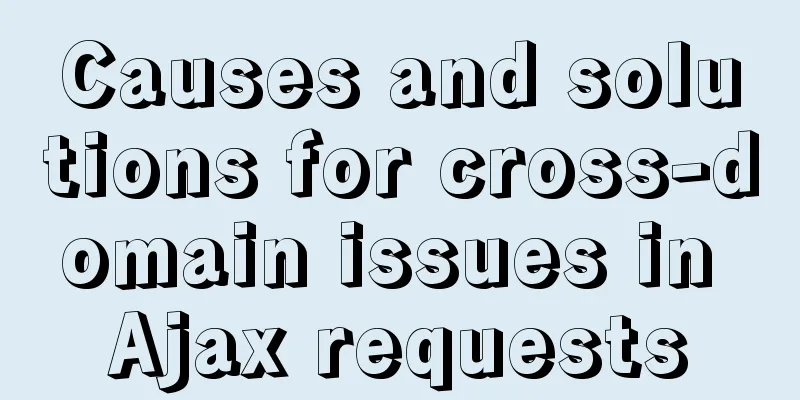Vue uses WebSocket to simulate the chat function

|
The effect shows that two browsers simulate each other
1. Create a simulated node service Create a
**Download in the server terminal directory**
2. Write the server.js fileThe code is as follows
var userNum = 0; //Count the number of online users var chatList = []; //Record chat history var WebSocketServer = require('ws').Server;
wss = new WebSocketServer({ port: 8181 }); //8181 corresponds to the front end //Call broadcast to achieve data intercommunication and real-time update wss.broadcast = function (msg) {
wss.clients.forEach(function each(client) {
client.send(msg);
});
};
wss.on('connection', function (ws) {
userNum++; //Connection established successfully, number of people online +1
wss.broadcast(JSON.stringify({ funName: 'userCount', users: userNum, chat: chatList })); //Successful connection broadcasts the number of people currently online console.log('Connected clients:', userNum);
//Receive data sent by the front end ws.on('message', function (e) {
var resData = JSON.parse(e)
console.log('Received a message from clent:' + resData.msg)
chatList.push({ userId: resData.userId, content: resData.msg }); //Every time a message is sent, it will be stored and then broadcasted, so that each user who comes in can see the previous data wss.broadcast(JSON.stringify({ userId: resData.userId, msg: resData.msg })); //Each message sent is equivalent to broadcasting a message });
ws.on('close', function (e) {
userNum--; //Establish connection and close the number of people online - 1
wss.broadcast(JSON.stringify({ funName: 'userCount', users: userNum, chat: chatList })); //Establish connection and close broadcast once. Current number of online clients console.log('Connected clients:', userNum);
console.log('Long connection is closed')
})
})
console.log('Server created successfully') Then 3.vue front-end pageThe code is as follows
<template>
<div class="chat-box">
<header>Number of people in chat room: {{count}}</header>
<div class="msg-box" ref="msg-box">
<div
v-for="(i,index) in list"
:key="index"
class="msg"
:style="i.userId == userId?'flex-direction:row-reverse':''"
>
<div class="user-head">
<div
class="head"
:style="` background: hsl(${getUserHead(i.userId,'bck')}, 88%, 62%); clip-path: polygon(${getUserHead(i.userId,'polygon')}% 0,100% 100%,0% 100%); transform: rotate(${getUserHead(i.userId,'rotate')}deg)`"
></div>
</div>
<div class="user-msg">
<span
:style="i.userId == userId?'float: right':''"
:class="i.userId == userId?'right':'left'"
>{{i.content}}</span>
</div>
</div>
</div>
<div class="input-box">
<input type="text" ref="sendMsg" v-model="contentText" @keyup.enter="sendText()" />
<div class="btn" :class="{['btn-active']:contentText}" @click="sendText()">Send</div>
</div>
</div>
</template>
<script>
export default {
data() {
return {
ws: null,
count: 0,
userId: null, //Current user ID
list: [], //array of chat records contentText: "", //input value};
},
created() {
this.getUserID();
},
mounted() {
this.initWebSocket();
},
methods: {
//Use the timestamp as the current user ID
getUserID() {
let time = new Date().getTime();
this.userId = time;
},
//Generate a random avatar based on userID getUserHead(id, type) {
let ID = String(id);
if (type == "bck") {
return Number(ID.substring(ID.length - 3));
}
if (type == "polygon") {
return Number(ID.substring(ID.length - 2));
}
if (type == "rotate") {
return Number(ID.substring(ID.length - 3));
}
},
//Scroll bar to the bottom scrollBottm() {
let el = this.$refs["msg-box"];
el.scrollTop = el.scrollHeight;
},
//Send chat message sendText() {
let _this = this;
_this.$refs["sendMsg"].focus();
if (!_this.contentText) {
return;
}
let params = {
userId: _this.userId,
msg: _this.contentText,
};
_this.ws.send(JSON.stringify(params)); //Call WebSocket send() to send information _this.contentText = "";
setTimeout(() => {
_this.scrollBottm();
}, 500);
},
//Enter the page to create a websocket connection initWebSocket() {
let _this = this;
//Judge whether there is a websocket connection on the page if (window.WebSocket) {
// The port number :8181 here should be consistent with the backend configuration let ws = new WebSocket("ws://192.168.5.42:9502");
// let ws = new WebSocket("ws://192.168.5.8:8181"); //Here is my local test_this.ws = ws;
ws.onopen = function (e) {
console.log("Server connection successful");
};
ws.onclose = function (e) {
console.log("Server connection closed");
};
ws.onerror = function () {
console.log("Server connection error");
};
ws.onmessage = function (e) {
//Receive data returned by the server let resData = JSON.parse(e.data);
if (resData.funName == "userCount") {
_this.count = resData.users;
_this.list = resData.chat;
} else {
_this.list = [
..._this.list,
{ userId: resData.userId, content: resData.msg },
];
}
};
}
},
},
};
</script>
<style lang="scss" scoped>
.chat-box {
margin: 0 auto;
background: #fafafa;
position: absolute;
height: 100%;
width: 100%;
// max-width: 700px;
header {
position: fixed;
width: 100%;
height: 3rem;
background: #409eff;
// max-width: 700px;
display: flex;
justify-content: center;
align-items: center;
font-weight: bold;
color: white;
font-size: 1rem;
}
.msg-box {
position: absolute;
height: calc(100% - 6.5rem);
width: 100%;
margin-top: 3rem;
overflow-y: scroll;
.msg {
width: 95%;
min-height: 2.5rem;
margin: 1rem 0.5rem;
position: relative;
display: flex;
justify-content: flex-start !important;
.user-head {
min-width: 2.5rem;
width: 20%;
width: 2.5rem;
height: 2.5rem;
border-radius: 50%;
background: #f1f1f1;
display: flex;
justify-content: center;
align-items: center;
.head {
width: 1.2rem;
height: 1.2rem;
}
// position: absolute;
}
.user-msg {
width: 80%;
// position: absolute;
word-break: break-all;
position: relative;
z-index: 5;
span {
display: inline-block;
padding: 0.5rem 0.7rem;
border-radius: 0.5rem;
margin-top: 0.2rem;
font-size: 0.88rem;
}
.left {
background: white;
animation: toLeft 0.5s ease both 1;
}
.right {
background: #53a8ff;
color: white;
animation: toright 0.5s ease both 1;
}
@keyframes toLeft {
0% {
opacity: 0;
transform: translateX(-10px);
}
100% {
opacity: 1;
transform: translateX(0px);
}
}
@keyframes toright {
0% {
opacity: 0;
transform: translateX(10px);
}
100% {
opacity: 1;
transform: translateX(0px);
}
}
}
}
}
.input-box {
padding: 0 0.5rem;
position: absolute;
bottom: 0;
width: 97%;
height: 3.5rem;
background: #fafafa;
box-shadow: 0 0 5px #ccc;
display: flex;
justify-content: space-between;
align-items: center;
input {
height: 2.3rem;
display: inline-block;
width: 100%;
padding: 0.5rem;
border: none;
border-radius: 0.2rem;
font-size: 0.88rem;
}
.btn {
height: 2.3rem;
min-width: 4rem;
background: #e0e0e0;
padding: 0.5rem;
font-size: 0.88rem;
color: white;
text-align: center;
border-radius: 0.2rem;
margin-left: 0.5rem;
transition: 0.5s;
line-height: 2.3rem;
}
.btn-active {
background: #409eff;
}
}
}
</style>
This is the end of this article about how Vue uses WebSocket to simulate the chat function. For more relevant content about how Vue uses WebSocket to implement chat, please search for previous articles on 123WORDPRESS.COM or continue to browse the following related articles. I hope you will support 123WORDPRESS.COM in the future! You may also be interested in:
|
<<: ERROR 2002 (HY000): Can't connect to local MySQL server through socket '/tmp/mysql.sock'
>>: MySQL 8.0.13 installation and configuration graphic tutorial
Recommend
How to start and stop SpringBoot jar program deployment shell script in Linux
Without further ado, let me give you the code. Th...
The whole process of installing and configuring Harbor1.7 on CentOS7.5
1. Download the required packages wget -P /usr/lo...
Example of how to achieve semi-transparent background image and opaque content in CSS3
I encountered this problem when I was making the ...
What do CN2, GIA, CIA, BGP and IPLC mean?
What is CN2 line? CN2 stands for China Telecom Ne...
Flex layout realizes the layout mode of upper and lower fixed and middle sliding
This article mainly introduces the layout method ...
Vue-Router installation process and principle detailed
Table of contents 1. Front-end routing implementa...
How to solve the problem of Chinese garbled characters when inserting table data into MySQL
1. Problem During development, when inserting dat...
Detailed explanation of the idea of distributed lock in MySQL with the help of DB
Preface Whether it is a stand-alone lock or a dis...
How to make a centos base image
Preface Now the operating system used by my compa...
js uses FileReader to read local files or blobs
Table of contents FileReader reads local files or...
Mysql keeps the existing content and adds content later
This command modifies the data table ff_vod and a...
In-depth analysis of Nginx virtual host
Table of contents 1. Virtual Host 1.1 Virtual Hos...
Linux's fastest text search tool ripgrep (the best alternative to grep)
Preface Speaking of text search tools, everyone m...
Usage and demonstration of ref in Vue
ref definition: used to register reference inform...
HTML table markup tutorial (6): dark border color attribute BORDERCOLORDARK
In a table, you can define the color of the lower...













